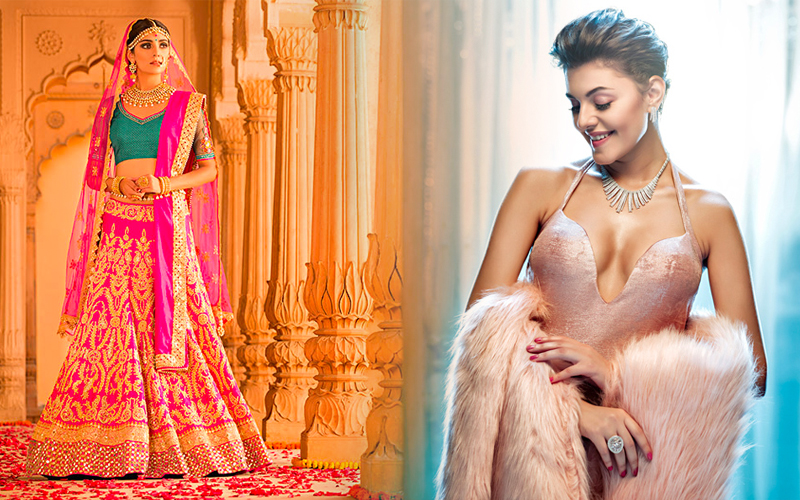There has always been a correlation between culture and cultural conventions and fashion. Traditional clothing continues to occupy a particular place in our hearts, despite the fact that modern clothing has recently taken center stage. We shall explore the fascinating worlds of traditional attire and contemporary fashion in this blog, highlighting their individual qualities and praising the beauty they add to our lives.
Traditional Dress:
Rich Cultural Heritage:
A given area or community’s cultural identity and legacy are represented through its traditional clothing. It is a potent symbol of cultural pride and unification since it carries centuries’ worth of history, traditions, and workmanship.
Unique Designs and Techniques:
Traditional clothing frequently has complex, painstakingly created patterns, decorations, and embellishments. These methods have been handed down through the centuries, maintaining the dress’s authenticity and craftsmanship.
Symbolic Meanings:
Traditional clothing frequently carries symbolic connotations that represent many facets of a community’s rituals, beliefs, and social standing. It acts as a visual language that conveys the customs and values that a certain group of people hold dear.
Celebrations and Festivals:
Traditional dress plays a significant role in festive occasions, weddings, and religious ceremonies. It brings a sense of grandeur and festivity, fostering a deep sense of community and belonging.
Modern Dress:
- Fashion as Self-Expression: Modern dress allows individuals to express their personal style, breaking free from the constraints of tradition. It embraces innovation, diversity, and individuality, offering endless possibilities for self-expression.
- Adaptability and Versatility: Modern fashion is highly adaptable to different occasions and lifestyles. It caters to the fast-paced, dynamic nature of contemporary life, offering a range of styles that suit various settings, from formal work environments to casual outings.
- Blend of Cultures: In the modern era, fashion has become a melting pot of different cultures and influences. Designers often draw inspiration from traditional dress, incorporating elements into contemporary designs, resulting in fusion fashion that combines the best of both worlds.
- Social and Environmental Consciousness: With the rise of ethical and sustainable fashion movements, modern dress has embraced a new dimension. Designers and consumers are increasingly conscious of the social and environmental impact of clothing, promoting fair trade practices and eco-friendly materials.
Conclusion: Traditional dress and modern fashion are not mutually exclusive; instead, they coexist, each with its unique appeal and significance. Traditional attire celebrates our roots, preserving cultural heritage, while modern fashion embodies our ever-evolving world and allows for self-expression and creativity. Both traditional dress and modern fashion contribute to the tapestry of human culture, adding color, diversity, and beauty to our lives. Let us embrace and appreciate both, cherishing our traditions while embracing the dynamism of the modern world.
What is a modern dressing style?
Modern dressing style refers to the contemporary fashion trends and choices that are popular in the current era. It is characterized by a blend of innovation, individuality, and adaptability to the fast-paced lifestyle of the modern world. Modern fashion reflects the current cultural and societal influences, and it often emphasizes self-expression, diversity, and a sense of personal style.
Here are some key features of modern dressing style:
- Minimalism: Modern fashion often embraces clean lines, simplicity, and minimalistic aesthetics. It focuses on the mantra “less is more,” with streamlined silhouettes and a subdued color palette.
- Mixing and Matching: Modern dressing style encourages mixing and matching different elements to create unique and personalized outfits. It is common to see combinations of various patterns, textures, and styles to achieve a contemporary and eclectic look.
- Casual and Comfortable: Modern fashion values comfort without compromising style. It emphasizes casual and relaxed attire suitable for everyday wear. Athleisure wear, jeans, t-shirts, sneakers, and other comfortable yet fashionable pieces are popular in modern dressing.
- Versatility: Modern dressing style embraces versatility and adaptability. Clothing that can transition seamlessly from day to night, or from work to social gatherings, is highly valued. Layering, convertible pieces, and multifunctional accessories are often used to achieve this versatility.
- Individuality and Self-Expression: Modern fashion encourages individuals to express their unique personalities through their clothing choices. It celebrates diversity and embraces personal style as a form of self-expression. Mixing vintage pieces with contemporary designs, experimenting with different trends, and adding personal touches to outfits are common practices.
- Sustainable and Ethical Fashion: With growing awareness of environmental and social issues, modern dressing style incorporates ethical and sustainable fashion practices. Consumers and designers are increasingly mindful of the materials used, fair labor practices, and the overall impact of the fashion industry on the planet.
It is important to note that modern dressing style is not a fixed or static concept but rather an ever-evolving reflection of the current times. Trends change, new styles emerge, and fashion continues to adapt to the preferences and needs of the modern individual.
What are the advantages of wearing traditional clothes?
Wearing traditional clothes offers several advantages, which go beyond their aesthetic appeal. Here are some advantages of wearing traditional clothes:
- Cultural Identity and Heritage: Traditional clothes are a powerful representation of one’s cultural identity and heritage. They serve as a visual expression of the customs, values, and traditions of a particular community or region. By wearing traditional attire, individuals can connect with their roots, preserving and promoting their cultural heritage.
- Sense of Belonging and Community: Traditional clothes foster a sense of belonging and community. They create a shared identity among individuals belonging to the same cultural or ethnic group, reinforcing social bonds and a sense of unity. Wearing traditional attire can help strengthen cultural connections and promote a sense of pride in one’s community.
- Symbolic Meaning and Significance: Traditional clothes often carry symbolic meanings that reflect various aspects of a community’s beliefs, rituals, and social status. They can convey messages about marital status, age, social rank, or specific roles within a community. By wearing traditional attire, individuals participate in and uphold these symbolic traditions, contributing to the preservation of cultural values.
- Preservation of Traditional Crafts and Artistry: Traditional clothes often feature intricate craftsmanship and unique techniques that have been passed down through generations. By wearing traditional attire, individuals support and promote the continuation of these traditional crafts. This helps preserve traditional skills, encourages local artisans, and contributes to the sustainability of cultural practices.
- Celebration of Festivals and Special Occasions: Traditional clothes play a significant role in festivals, weddings, and other cultural celebrations. They add to the festive atmosphere, creating a visual spectacle and enhancing the overall experience. Wearing traditional attire during these occasions helps individuals actively engage in their cultural traditions and celebrate their heritage.
- Unique Aesthetic Appeal: Traditional clothes are often visually stunning, with vibrant colors, intricate patterns, and beautiful embellishments. They showcase the artistry and creativity of a particular culture, offering a distinct and captivating aesthetic. Wearing traditional attire allows individuals to stand out and make a fashion statement while embracing the beauty of their cultural heritage.
It is worth noting that the advantages of wearing traditional clothes can vary based on personal preferences, cultural context, and individual experiences. However, overall, traditional attire offers a deeper connection to one’s culture, fosters a sense of community, and contributes to the preservation of cultural heritage.
What is the difference between traditional dress and uniform?
Traditional dress and uniform are two distinct concepts that serve different purposes and have different characteristics. Here’s a breakdown of the differences between traditional dress and uniform:
- Purpose:
- Traditional Dress: Traditional dress is primarily associated with cultural, historical, or ceremonial significance. It represents the cultural identity, customs, and heritage of a specific community or region. Traditional attire is often worn during festivals, religious ceremonies, weddings, or other traditional events as a way to celebrate and uphold cultural traditions.
- Uniform: Uniforms, on the other hand, are standardized outfits worn by individuals in specific professions, organizations, or institutions. They serve the purpose of creating a cohesive and recognizable look, promoting a sense of unity, professionalism, and identification within a particular group.
- Variation and Individuality:
- Traditional Dress: Traditional dress typically allows for more individuality and variation in terms of design, colors, patterns, and embellishments. It often reflects the creativity and regional aesthetics of a particular culture. Traditional attire can vary greatly from one community to another, showcasing the diversity within a larger cultural group.
- Uniform: Uniforms, by nature, are designed to create a consistent and standardized appearance. They are typically less varied and allow little room for personalization or individual expression. Uniforms focus more on functionality, practicality, and the need for a unified and identifiable appearance.
- Cultural and Societal Significance:
- Traditional Dress: Traditional dress carries cultural and societal significance, representing the heritage, customs, and values of a community or region. It often has symbolic meanings, reflecting various aspects of a culture’s history, beliefs, and social hierarchy. Traditional attire plays a crucial role in preserving cultural identity and fostering a sense of belonging.
- Uniform: Uniforms are primarily associated with specific professions, organizations, or institutions. They serve practical purposes, such as easily identifying members of a group, maintaining professionalism, and ensuring safety or functionality in certain work environments. Uniforms help establish a sense of unity, discipline, and order within these contexts.
- Context of Wear:
- Traditional Dress: Traditional attire is typically worn on specific occasions, events, or cultural celebrations. It is not intended for everyday wear but rather reserved for special gatherings or traditional ceremonies that honor and uphold cultural practices.
- Uniform: Uniforms are designed for regular and consistent wear within the designated profession, organization, or institution. They are worn during work hours or specific duties to create a cohesive and professional appearance for individuals fulfilling their roles.
While both traditional dress and uniform have their unique roles and significance, traditional dress is deeply rooted in culture, heritage, and celebration, whereas uniforms focus on professional identification and cohesion within specific contexts.




